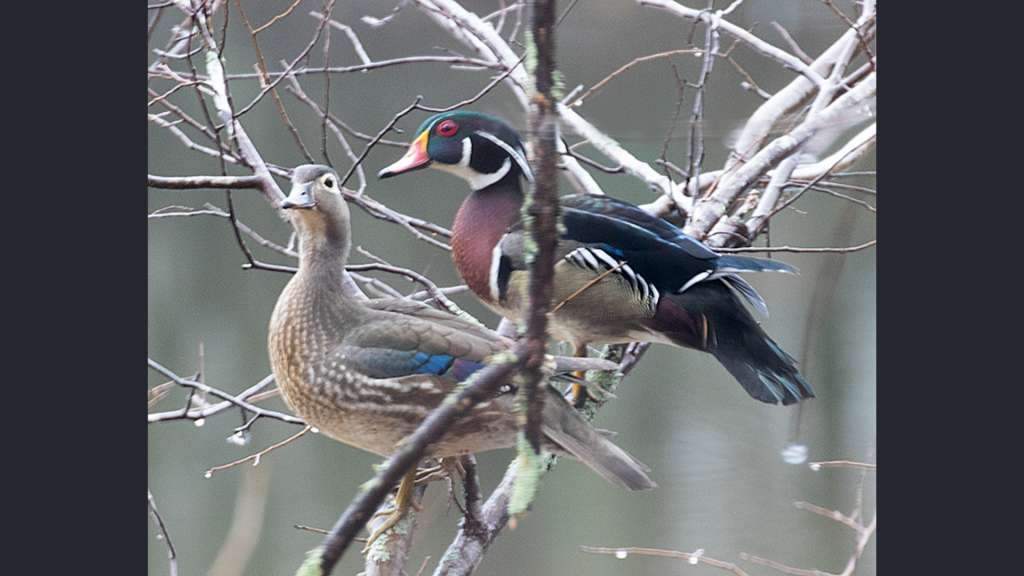When thinking about ducks, most people imagine them paddling across ponds or swaying along shorelines. Yet surprisingly, several duck species regularly rest in trees.
This unexpected behavior often catches bird watchers off guard. Just picture a duck gracefully landing on a branch high above the water.
Yes, some ducks have specially adapted feet that grip branches securely. These tree-dwelling ducks build nests, raise families, and spend considerable time among the leaves and branches.
This blog will introduce you to the ducks that land in trees—how they do it, why they do it, and where to spot this amazing sight.
Do Ducks Really Land in Trees?
Yes, some ducks genuinely do land in trees—especially species like wood ducks, black-bellied whistling ducks, and mandarin ducks.
Unlike the typical image of ducks waddling on land or floating on water, these agile flyers can land directly on branches or even inside hollow trunks. Their strong, curved claws help them grip tree limbs securely.
Many of these ducks nest in tree cavities—either naturally formed or carved out by woodpeckers.
This behavior may seem unusual, but it’s an important survival strategy for these ducks.
Why Some Ducks Land in Trees
Some duck species have developed special nesting behaviors to protect themselves and ensure the survival of their young in the wild.
Below are some of the main reasons listed that showcase why ducks land in trees:
- Tree-perching helps ducks avoid ground predators, such as foxes, raccoons, and snakes.
- Nesting high up offers extra safety for both eggs and ducklings.
- These ducks have evolved sharper claws to grip tree branches securely.
- This behavior reduces nesting competition with birds that use the ground.
- Nesting in trees increases the survival of ducklings in areas with high predator densities.
Different Types of Ducks that Land in Trees
Learn about different types of ducks that live and nest in trees, each with its special traits and unique habits.
1. Wood Ducks
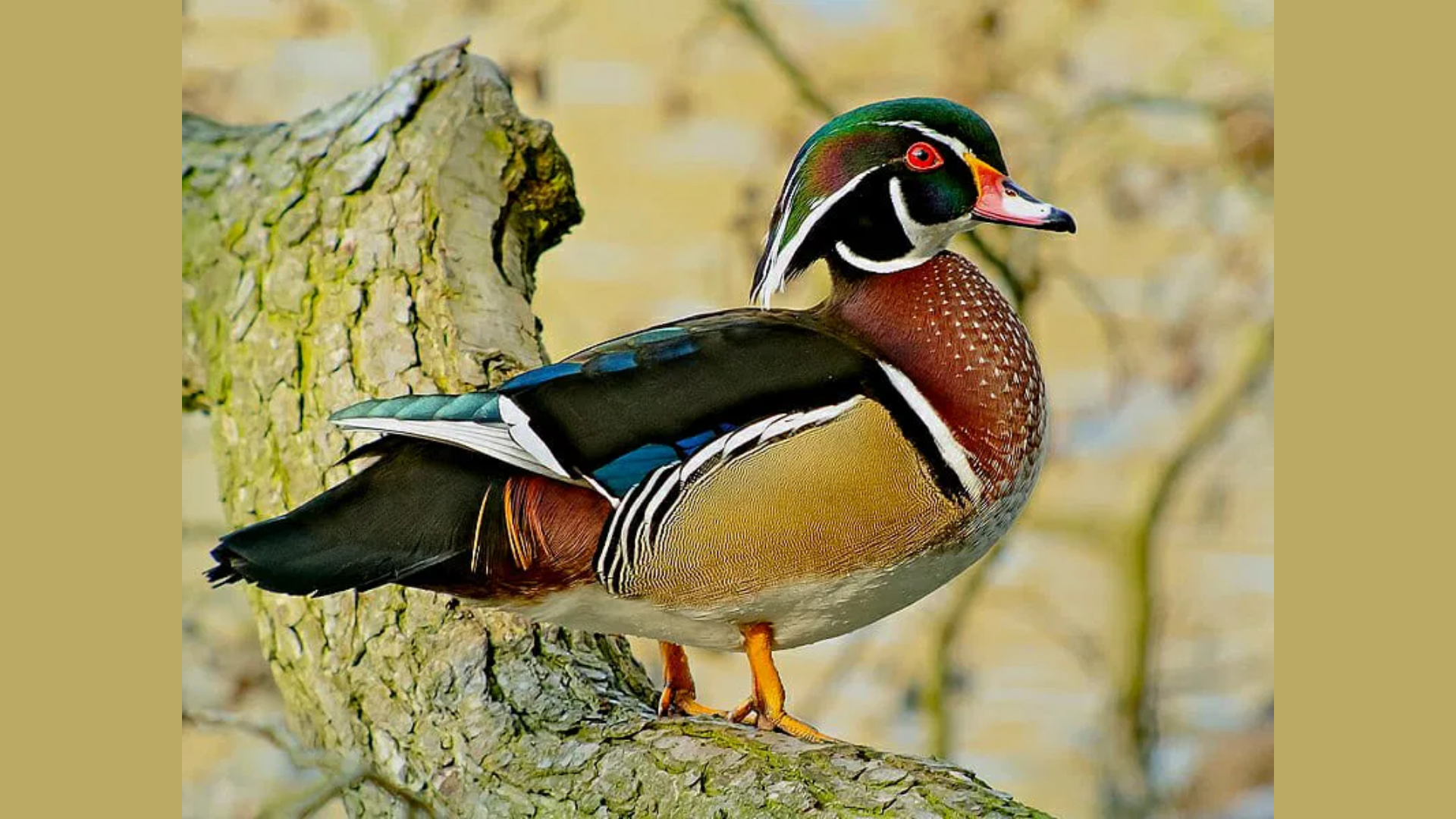
With their colorful feathers and awesome agility, wood ducks are among the best-known tree-nesting ducks in North America.
- Special Traits: Colorful plumage, boxy head, and well-developed toe grip for gripping branches.
- Unique Habits: Nest in tree cavities up to 65 feet high; ducklings leap safely from nests just one day after hatching.
- Preferred Habitat: Wetlands and wooded streams where food and shelter are easily accessible.
2. Mandarin Ducks

These ornamental ducks may look delicate, but they’re well-equipped for life in the treetops thanks to their strong, gripping claws.
- Special Traits: Unique feathers in orange, blue, and purple; sharp, hook-like claws for secure perching.
- Unique Habits: Use tree holes for nesting and rely on high-up locations to stay safe from predators.
- Preferred Habitat: Quiet, forested areas near calm ponds or streams.
3. Hooded Mergansers
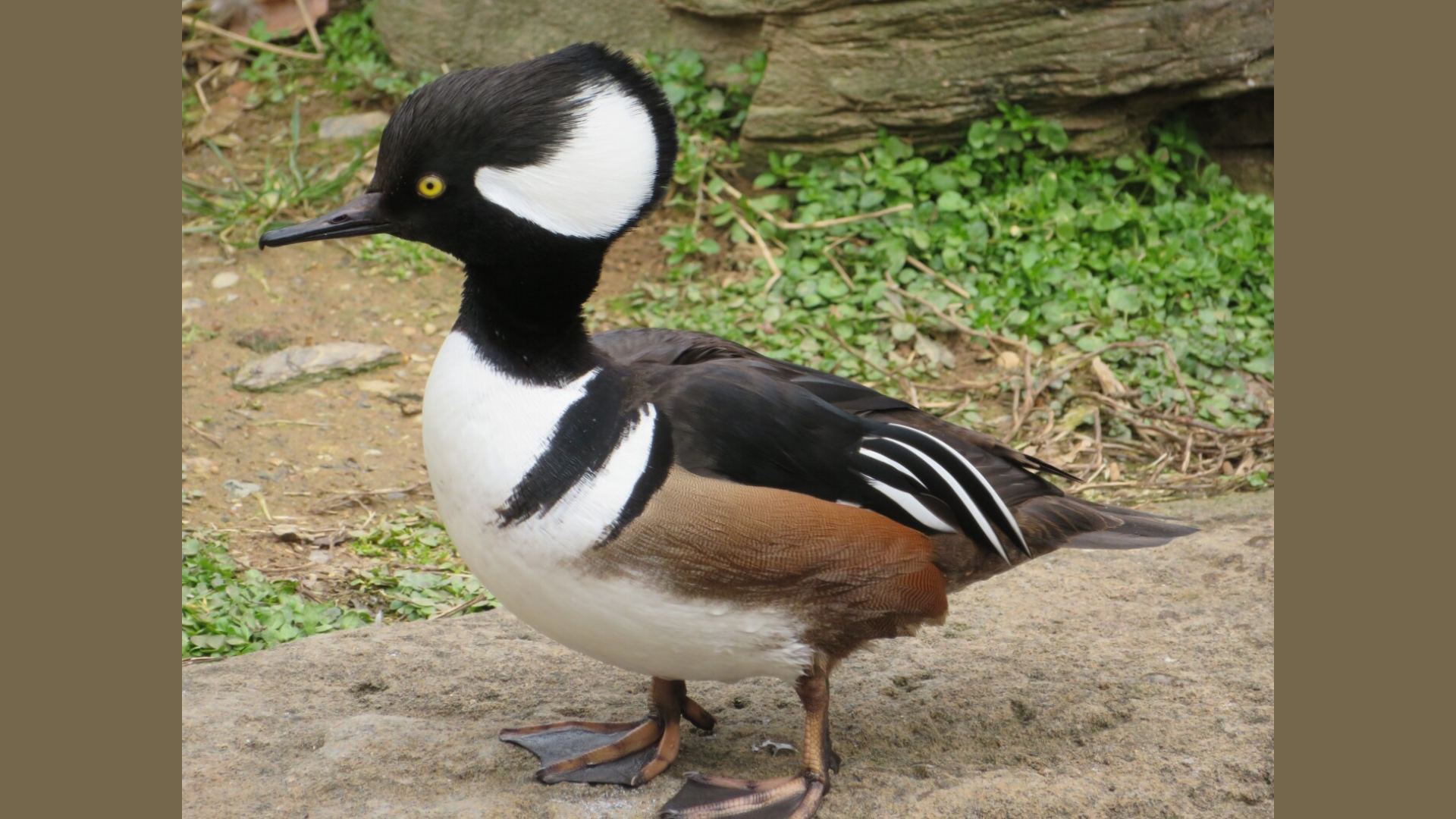
These ducks are known for their dramatic head crests and combine tree-perching skills with sharp hunting instincts for life near wooded waters.
- Special Traits: Fan-shaped crests and webbed feet adapted for gripping tree branches.
- Unique Habits: Nest in high cavities and dive skillfully for fish using narrow, serrated bills.
- Preferred Habitat: Wooded wetlands and areas with slow-moving water for easy hunting.
4. Buffleheads
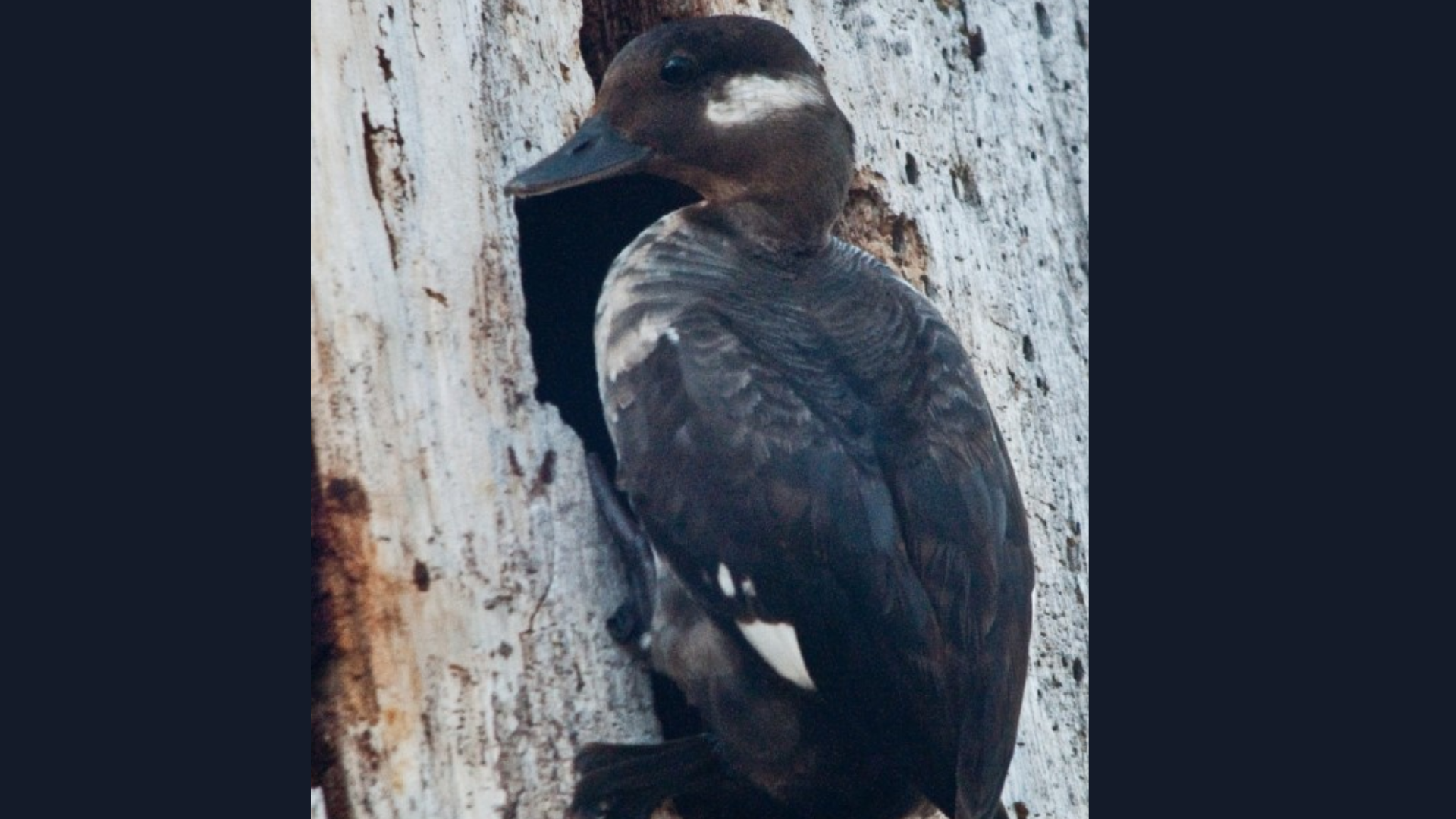
Don’t let their small size fool you—buffleheads are powerful flyers and tree nesters with a strong sense of home.
- Special Traits: Small bodies, rounded heads, and strong feet for balancing on branches.
- Unique Habits: Nest in abandoned woodpecker holes and often return to the same location each year.
- Preferred Habitat: Forested areas near lakes or ponds rich in aquatic insects and crustaceans.
5. Goldeneyes
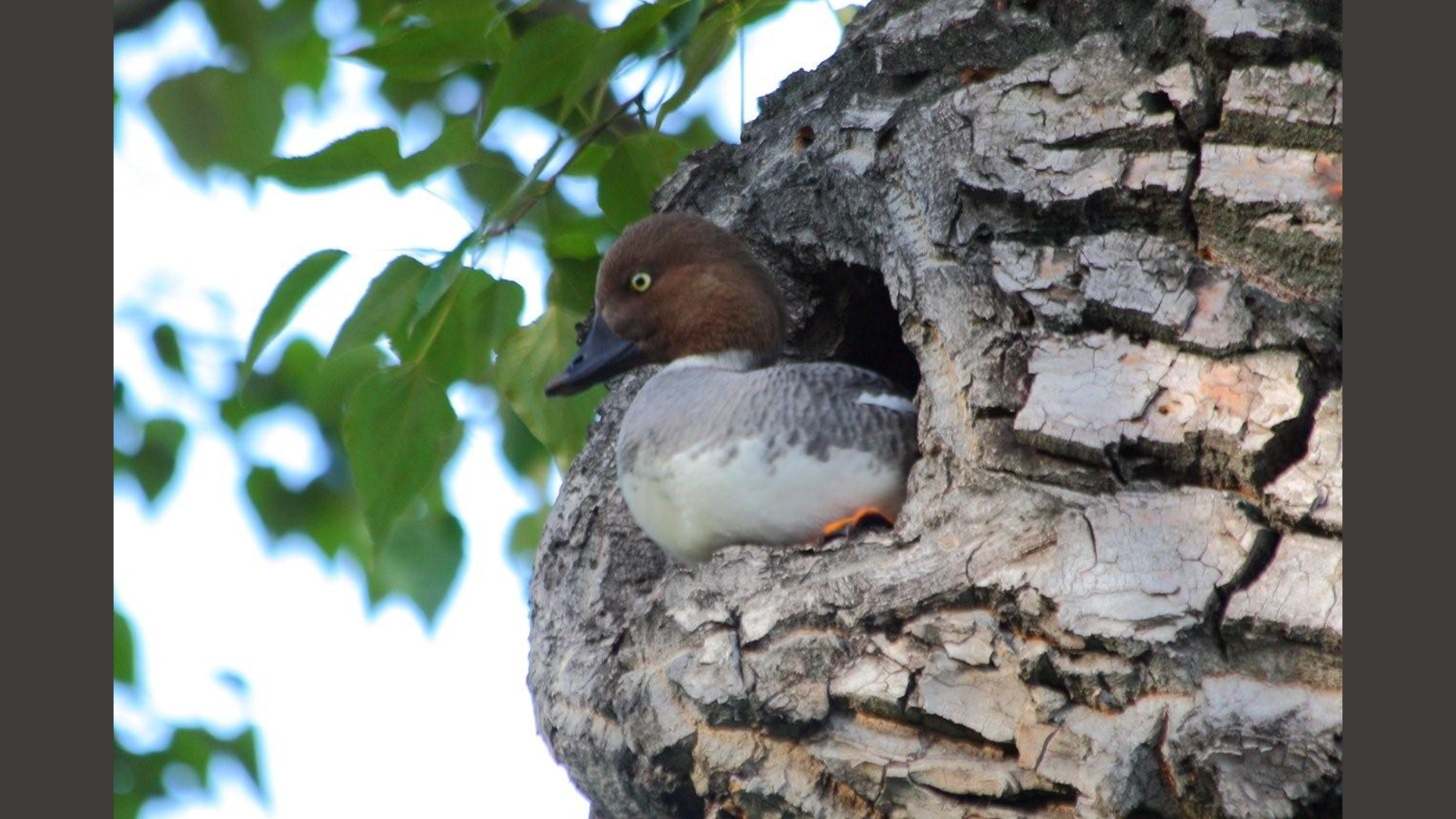
These ducks use height to their advantage, raising ducklings in tree hollows far above the forest floor.
- Special Traits: Bright yellow eyes and slightly longer claws for better stability in trees.
- Unique Habits: Nest 5–40 feet high in hollows; ducklings leap boldly to the ground after hatching.
- Preferred Habitat: Forested lakeshores and riverbanks, where they can find both tree cavities and water nearby.
How Ducks Adapt to Life in Trees
See how ducks adapt to living and nesting in trees, using their special abilities to survive and progress in challenging environments.
- Preferred Habitats: Tree-dwelling ducks advance in wetlands with mature trees that offer natural nesting cavities, blending aquatic feeding areas with safe nesting spots.
- Geographic Hotspots: Wood ducks are found in the eastern U.S., particularly in states such as Virginia and Florida, and in the northwest regions of Oregon. Meanwhile, mandarin ducks are native to East Asia and have been introduced to habitats in Europe.
- Seasonal Timing: Spring, from March to May, is ideal for duck watching. It features courtship, nesting searches, and vibrant feather displays, making ducks most active and visible.
- Conservation Areas: Wildlife refuges utilize artificial nesting boxes to replace lost natural cavities, providing safe nesting sites and facilitating clustering of duck populations for easy viewing.
- Nature Center Accommodations: Duck boxes at centers feature viewing panels or cameras, allowing visitors to observe nesting behaviors without disturbing the birds, thereby improving educational experiences.
Some Interesting Facts About Ducks
| Fact | Description |
|---|---|
| Sensitive Duck Bills | Ducks have nerve-rich bills that help them detect food by touch underwater, almost like facial fingertips. |
| Fearless Ducklings | Tree ducklings can jump from nests over 50 feet high without injury, even when only a day old. |
| Amazing Flying Skills | Wood ducks can fly straight into tiny tree holes at full speed with incredible accuracy. |
| Loyal Nesting Habits | Many tree-nesting ducks return to the same tree cavity year after year to lay eggs. |
| Recognizable Voices | Mother ducks and their ducklings use distinct calls to recognize each other, like having names. |
| Strong Nesting Memory | Female ducks often remember previous nest sites and may guide new mates to those familiar spots. |
Wrapping It Up
Ducks in trees might sound unusual, but it’s actually a smart way for some species to stay safe and raise their young.
With strong feet, sharp claws, and clever habits, these ducks make good use of tree branches and hollow trunks.
Whether it’s finding food, escaping predators, or returning to the same tree every year, tree-dwelling ducks know how to thrive.
Last but not least, it’s quite clear that ducks aren’t just made for water; some are made for the treetops, too!

